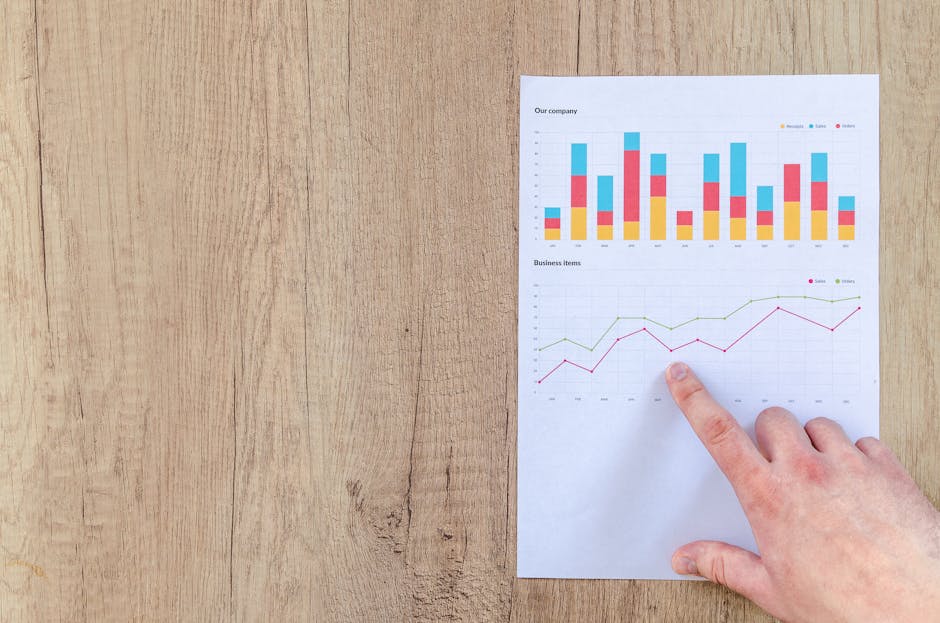Analyzing Economic Indicators for Strategic Decision Making
Imagine trying to plan a long road trip without a map or GPS. You’d likely get lost or take a much longer route than necessary. That’s what making business decisions without understanding economic indicators feels like. These data points act as your guide, offering insights into market conditions, consumer behavior, and broader economic trends. But how do you use these indicators effectively to steer your strategy in the right direction?

Understanding the Basics: What Are Economic Indicators?
Economic indicators are essentially data points that reflect the current state or future outlook of an economy. Think of them as the heartbeat of economic health, providing signals on whether things are looking stable, slowing down, or speeding up. They’re often categorized into three main types:
- Leading indicators: These predict future economic activity. Examples include stock market performance, new housing starts, and jobless claims.
- Coincident indicators: These measure the current state of the economy, such as GDP, employment levels, and retail sales.
- Lagging indicators: These confirm trends that have already occurred, like unemployment rates and corporate earnings.
Each type of indicator serves its purpose, but the real value comes from understanding how they interact. For instance, while a single leading indicator might hint at a slowdown, combining it with others can give you a clearer picture of what lies ahead.
Making Sense of Data: How to Interpret Economic Indicators
The sheer volume of data can feel daunting if you’re not sure where to start. To simplify this process, focus on indicators most relevant to your industry or goals. For example:
- If you’re in retail, track consumer confidence and disposable income levels closely.
- If you work in real estate, pay attention to housing starts and interest rate trends.
- If you're managing investments, keep an eye on GDP growth and inflation rates.
A practical example can bring this to life. Consider a business owner deciding whether to expand operations. By analyzing leading indicators like new building permits (to gauge construction activity) and manufacturing orders (to estimate demand), they can make an educated guess about whether economic conditions will support growth.
Real-World Applications: Putting Indicators to Work
Let’s take a closer look at how businesses use these tools in strategic decision-making:
- Timing market entry: A tech startup planning to launch a new product might study consumer spending trends alongside GDP forecasts. If consumer spending is growing steadily and GDP is projected to rise, this could indicate favorable market conditions for launching their product.
- Adjusting marketing strategies: Suppose an apparel brand notices declining consumer confidence paired with rising unemployment rates. This could signal a need to shift focus from premium products to budget-friendly alternatives.
- Investment allocation: Investors often rely on lagging indicators like corporate earnings reports alongside leading ones such as bond yield curves to decide where to allocate funds during periods of uncertainty.
The key takeaway here is not just collecting data but applying it contextually within your specific domain. It’s less about numbers in isolation and more about connecting the dots they reveal.
Avoiding Misinterpretation
An important part of using economic indicators is understanding their limitations. Numbers alone don’t tell the whole story; they need context. For example:
- An increase in jobless claims might look alarming at first glance. But if it follows several months of strong hiring, it could simply signal a cooling-off period rather than a full-blown recession.
- A rise in inflation might initially seem concerning for consumers. Moderate inflation often accompanies economic growth and rising wages, positive signs for businesses selling goods or services.
This underscores why relying on one or two metrics rarely provides enough clarity for sound decisions. Instead, build a holistic picture by combining multiple indicators with qualitative insights (like industry trends or geopolitical events) to avoid missteps.
A Practical Framework for Using Economic Indicators
If all this sounds overwhelming, think about using a simple framework to organize your approach:
- Select relevant indicators: Choose 3-5 key metrics directly tied to your business or investment focus.
- Create benchmarks: Compare current data against historical averages or competitor performance to assess significance.
- Look for patterns: Don’t make decisions based on one data point; instead, seek consistent trends over time.
- Consult experts when needed: Economic forecasts aren’t always straightforward. Leverage insights from financial analysts or trusted publications when interpreting complex datasets.
This structured approach ensures you’re not just reacting impulsively but making calculated moves based on evidence-backed insights.
Earning success through strategic decision-making isn’t about having all the answers upfront, it’s about knowing where and how to look for them. Economic indicators serve as invaluable tools that can help you anticipate shifts before they happen and adapt accordingly. Whether you're expanding operations, launching new products, or managing investments, these insights provide both direction and confidence amid uncertainty.
This article was generated by AI